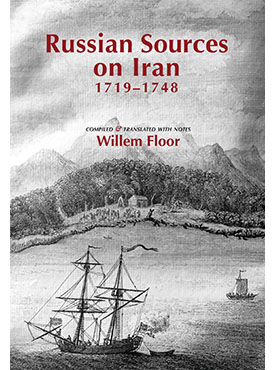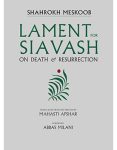About the Book
In Russian Sources on Iran, 1719–1748, polyglot scholar Willem Floor brings together annotated translations of reports by officials in Russian service that so far have either been used rarely by scholars, or not at all. It includes a detailed account of the mapping of the Caspian Sea by a Russian team from 1719 to 1720; and the Russian occupations of Derbend in 1722, of Baku in 1723; and of Gilan in 1724. There is also a comprehensive report of the locations and characteristics of the various ethnic groups living in Azerbaijan in 1728. As well as two reports by Persian officials about the events that led to the downfall of the Safavid dynasty.
Next follows a travelogue that describes the Russian withdrawal from occupied Iranian territory, as well as an itinerary of Prince Golitsin’s embassy to the court of Nader Shah in 1732. A Russian consul’s report on Reza Qoli Mirza’s assassination attempt of Nader Shah and its aftermath is followed by a detailed and very interesting account of Prince Golitsin’s second embassy to Iran in 1747. This coincided with Nader Shah’s murder, and describes the impact of this event on Gilan.
Apart from political information, these original sources stand out for their wealth of information on natural and socio-economic history of the regions visited. This book is a must read for any student of Iranian History.
About the Author
Willem Floor studied development economics and non-western sociology, as well as Persian, Arabic and Islamology from 1963-67 at the University of Utrecht (the Netherlands). He received his doctoral degree from the University of Leiden in 1971. Since 1983, Dr. Floor was employed by the World Bank as an energy specialist, however, after his retirement in 2002, he has dedicated his time to the study of the social and political history of Iran, and has published extensively throughout this time. His books include: Public Health in Qajar Iran, Agriculture in Qajar Iran, and The History of Theater in Iran, as well as, The Persian Gulf: A Political and Economic History of 5 Port Cities, 1500-1730, its second volume, Persian Gulf: The Rise of the Gulf Arabs, 1747-1792, third volume, The Rise and Fall of Bandar-e Lengeh, the fourth volume, Bandar Abbas: The Natural Gateway of Southeast Iran, and the fifth volume, The Persian Gulf: Links with the Hinterland Bushehr, Borazjan, Kazerun, Banu Ka’b, & Bandar Abbas, The Persian Gulf: The Hula Arabs of The Shibkuh Coast of Iran, and The Persian Gulf: Dutch-Omani Relations A Commercial & Political History 1651-1806, and The Persian Gulf: Muscat – City, Society and Trade . He has also published, Travels Through Northern Persia, 1770-1774, Titles and Emoluments in Safavid Iran, and A Social History of Sexual Relations in Iran; Labor and Industry in Iran, 1850-1941; Guilds, Merchants and Ulama in 19th Century Iran; The Rise and Fall of Nader Shah; Games Persians Play, and History of Bread in Iran. His translations include: Samuel Gottlieb Gmelin’s Travels Through Northern Persia 1770–1774 , and with Hasan Javadi, Abbas Qoli Aqa Bakikhanov’s The Heavenly Rose-Garden: A History of Shirvan & Daghestan; Evliya Chelebi’s Travels in Iran and the Caucasus, 1647 and 1654; A Man of Two Worlds: Pedros Bedik in Iran, 1670–1675, Awake: A Moslem Woman’s Rare Memoir of Her Life and Partnership with the Editor of Molla Nasreddin, the Most Influential Satirical Journal of the Caucasus and Iran, 1907–1931, and Engelbert Kaempfer: Exotic Attractions in Persia, 1684–1688: Travels & Observations.








